29 JANUARY 2025
St. Anthony’s Church is a modern Catholic church located in the vibrant seaside suburb of Clontarf, Dublin. Established in 1966, it serves a significant portion of the local community. The church is known for its welcoming atmosphere and active parish life.
The building itself is a notable example of modern ecclesiastical architecture, featuring clean lines and expansive stained-glass windows. It offers a variety of services and Mass times to cater to the needs of its parishioners, including daily and weekend Masses, as well as special services for Holy Days and other occasions.
St. Anthony’s is also actively involved in community outreach programmes, providing support and resources to those in need. It plays a vital role in the spiritual and social fabric of Clontarf, fostering a sense of belonging and shared faith among its members.
![ST ANTHONY'S CHURCH [CLONTARF]-246801-1 ST ANTHONY'S CHURCH [CLONTARF]-246801-1](https://excellentstreetimages.com/ChurchAndGraveWordPress/wp-content/uploads/2025/01/ST-ANTHONYS-CHURCH-CLONTARF-246801-1-1422x1067.jpg)
![ST ANTHONY'S CHURCH [CLONTARF]-246797-1 ST ANTHONY'S CHURCH [CLONTARF]-246797-1](https://excellentstreetimages.com/ChurchAndGraveWordPress/wp-content/uploads/2025/01/ST-ANTHONYS-CHURCH-CLONTARF-246797-1-1422x1067.jpg)
![ST ANTHONY'S CHURCH [CLONTARF]-246800-1 ST ANTHONY'S CHURCH [CLONTARF]-246800-1](https://excellentstreetimages.com/ChurchAndGraveWordPress/wp-content/uploads/2025/01/ST-ANTHONYS-CHURCH-CLONTARF-246800-1-1422x1067.jpg)
![ST ANTHONY'S CHURCH [CLONTARF]-246802-1 ST ANTHONY'S CHURCH [CLONTARF]-246802-1](https://excellentstreetimages.com/ChurchAndGraveWordPress/wp-content/uploads/2025/01/ST-ANTHONYS-CHURCH-CLONTARF-246802-1-1422x1067.jpg)
![ST ANTHONY'S CHURCH [CLONTARF]-246798-1 ST ANTHONY'S CHURCH [CLONTARF]-246798-1](https://excellentstreetimages.com/ChurchAndGraveWordPress/wp-content/uploads/2025/01/ST-ANTHONYS-CHURCH-CLONTARF-246798-1-1422x1067.jpg)
![ST ANTHONY'S CHURCH [CLONTARF]-246799-1 ST ANTHONY'S CHURCH [CLONTARF]-246799-1](https://excellentstreetimages.com/ChurchAndGraveWordPress/wp-content/uploads/2025/01/ST-ANTHONYS-CHURCH-CLONTARF-246799-1-1422x1067.jpg)
![ST ANTHONY'S CHURCH [CLONTARF]-246803-1 ST ANTHONY'S CHURCH [CLONTARF]-246803-1](https://excellentstreetimages.com/ChurchAndGraveWordPress/wp-content/uploads/2025/01/ST-ANTHONYS-CHURCH-CLONTARF-246803-1-1422x1067.jpg)
![ST ANTHONY'S CHURCH [CLONTARF]-246804-1 ST ANTHONY'S CHURCH [CLONTARF]-246804-1](https://excellentstreetimages.com/ChurchAndGraveWordPress/wp-content/uploads/2025/01/ST-ANTHONYS-CHURCH-CLONTARF-246804-1-1422x1067.jpg)
![ST ANTHONY'S CHURCH [CLONTARF]-246810-1 ST ANTHONY'S CHURCH [CLONTARF]-246810-1](https://excellentstreetimages.com/ChurchAndGraveWordPress/wp-content/uploads/2025/01/ST-ANTHONYS-CHURCH-CLONTARF-246810-1-1422x1067.jpg)
![ST ANTHONY'S CHURCH [CLONTARF]-246811-1 ST ANTHONY'S CHURCH [CLONTARF]-246811-1](https://excellentstreetimages.com/ChurchAndGraveWordPress/wp-content/uploads/2025/01/ST-ANTHONYS-CHURCH-CLONTARF-246811-1-1422x1067.jpg)
![ST ANTHONY'S CHURCH [CLONTARF]-246812-1 ST ANTHONY'S CHURCH [CLONTARF]-246812-1](https://excellentstreetimages.com/ChurchAndGraveWordPress/wp-content/uploads/2025/01/ST-ANTHONYS-CHURCH-CLONTARF-246812-1-1422x1067.jpg)
![ST ANTHONY'S CHURCH [CLONTARF]-246805-1 ST ANTHONY'S CHURCH [CLONTARF]-246805-1](https://excellentstreetimages.com/ChurchAndGraveWordPress/wp-content/uploads/2025/01/ST-ANTHONYS-CHURCH-CLONTARF-246805-1-1422x1067.jpg)
![ST ANTHONY'S CHURCH [CLONTARF]-246806-1 ST ANTHONY'S CHURCH [CLONTARF]-246806-1](https://excellentstreetimages.com/ChurchAndGraveWordPress/wp-content/uploads/2025/01/ST-ANTHONYS-CHURCH-CLONTARF-246806-1-1422x1067.jpg)
![ST ANTHONY'S CHURCH [CLONTARF]-246807-1 ST ANTHONY'S CHURCH [CLONTARF]-246807-1](https://excellentstreetimages.com/ChurchAndGraveWordPress/wp-content/uploads/2025/01/ST-ANTHONYS-CHURCH-CLONTARF-246807-1-1422x1067.jpg)
![ST ANTHONY'S CHURCH [CLONTARF]-246809-1 ST ANTHONY'S CHURCH [CLONTARF]-246809-1](https://excellentstreetimages.com/ChurchAndGraveWordPress/wp-content/uploads/2025/01/ST-ANTHONYS-CHURCH-CLONTARF-246809-1-1422x1067.jpg)
![ST ANTHONY'S CHURCH [CLONTARF]-246808-1 ST ANTHONY'S CHURCH [CLONTARF]-246808-1](https://excellentstreetimages.com/ChurchAndGraveWordPress/wp-content/uploads/2025/01/ST-ANTHONYS-CHURCH-CLONTARF-246808-1-1422x1067.jpg)
![ST ANTHONY'S CHURCH [CLONTARF]-246816-1 ST ANTHONY'S CHURCH [CLONTARF]-246816-1](https://excellentstreetimages.com/ChurchAndGraveWordPress/wp-content/uploads/2025/01/ST-ANTHONYS-CHURCH-CLONTARF-246816-1-1422x1067.jpg)
![ST ANTHONY'S CHURCH [CLONTARF]-246813-1 ST ANTHONY'S CHURCH [CLONTARF]-246813-1](https://excellentstreetimages.com/ChurchAndGraveWordPress/wp-content/uploads/2025/01/ST-ANTHONYS-CHURCH-CLONTARF-246813-1-1422x1067.jpg)
![ST ANTHONY'S CHURCH [CLONTARF]-246814-1 ST ANTHONY'S CHURCH [CLONTARF]-246814-1](https://excellentstreetimages.com/ChurchAndGraveWordPress/wp-content/uploads/2025/01/ST-ANTHONYS-CHURCH-CLONTARF-246814-1-1422x1067.jpg)
![ST ANTHONY'S CHURCH [CLONTARF]-246815-1 ST ANTHONY'S CHURCH [CLONTARF]-246815-1](https://excellentstreetimages.com/ChurchAndGraveWordPress/wp-content/uploads/2025/01/ST-ANTHONYS-CHURCH-CLONTARF-246815-1-1422x1067.jpg)
![ST ANTHONY'S CHURCH [CLONTARF]-246821-1 ST ANTHONY'S CHURCH [CLONTARF]-246821-1](https://excellentstreetimages.com/ChurchAndGraveWordPress/wp-content/uploads/2025/01/ST-ANTHONYS-CHURCH-CLONTARF-246821-1-1422x1067.jpg)
![ST ANTHONY'S CHURCH [CLONTARF]-246817-1 ST ANTHONY'S CHURCH [CLONTARF]-246817-1](https://excellentstreetimages.com/ChurchAndGraveWordPress/wp-content/uploads/2025/01/ST-ANTHONYS-CHURCH-CLONTARF-246817-1-1422x1067.jpg)
![ST ANTHONY'S CHURCH [CLONTARF]-246818-1 ST ANTHONY'S CHURCH [CLONTARF]-246818-1](https://excellentstreetimages.com/ChurchAndGraveWordPress/wp-content/uploads/2025/01/ST-ANTHONYS-CHURCH-CLONTARF-246818-1-1422x1067.jpg)
![ST ANTHONY'S CHURCH [CLONTARF]-246819-1 ST ANTHONY'S CHURCH [CLONTARF]-246819-1](https://excellentstreetimages.com/ChurchAndGraveWordPress/wp-content/uploads/2025/01/ST-ANTHONYS-CHURCH-CLONTARF-246819-1-1422x1067.jpg)
![ST ANTHONY'S CHURCH [CLONTARF]-246820-1 ST ANTHONY'S CHURCH [CLONTARF]-246820-1](https://excellentstreetimages.com/ChurchAndGraveWordPress/wp-content/uploads/2025/01/ST-ANTHONYS-CHURCH-CLONTARF-246820-1-1422x1067.jpg)
![CHURCH OF THE ASSUMPTION [CASTLE STREET DALKEY NEW YEAR 2025]-246065-1 CHURCH OF THE ASSUMPTION [CASTLE STREET DALKEY NEW YEAR 2025]-246065-1](https://excellentstreetimages.com/ChurchAndGraveWordPress/wp-content/uploads/2025/01/CHURCH-OF-THE-ASSUMPTION-CASTLE-STREET-DALKEY-NEW-YEAR-2025-246065-1.jpg)
![CHURCH OF THE ASSUMPTION [CASTLE STREET DALKEY NEW YEAR 2025]-246064-1 CHURCH OF THE ASSUMPTION [CASTLE STREET DALKEY NEW YEAR 2025]-246064-1](https://excellentstreetimages.com/ChurchAndGraveWordPress/wp-content/uploads/2025/01/CHURCH-OF-THE-ASSUMPTION-CASTLE-STREET-DALKEY-NEW-YEAR-2025-246064-1.jpg)
![CHURCH OF THE ASSUMPTION [CASTLE STREET DALKEY NEW YEAR 2025]-246069-1 CHURCH OF THE ASSUMPTION [CASTLE STREET DALKEY NEW YEAR 2025]-246069-1](https://excellentstreetimages.com/ChurchAndGraveWordPress/wp-content/uploads/2025/01/CHURCH-OF-THE-ASSUMPTION-CASTLE-STREET-DALKEY-NEW-YEAR-2025-246069-1.jpg)
![CHURCH OF THE ASSUMPTION [CASTLE STREET DALKEY NEW YEAR 2025]-246068-1 CHURCH OF THE ASSUMPTION [CASTLE STREET DALKEY NEW YEAR 2025]-246068-1](https://excellentstreetimages.com/ChurchAndGraveWordPress/wp-content/uploads/2025/01/CHURCH-OF-THE-ASSUMPTION-CASTLE-STREET-DALKEY-NEW-YEAR-2025-246068-1.jpg)
![CHURCH OF THE ASSUMPTION [CASTLE STREET DALKEY NEW YEAR 2025]-246067-1 CHURCH OF THE ASSUMPTION [CASTLE STREET DALKEY NEW YEAR 2025]-246067-1](https://excellentstreetimages.com/ChurchAndGraveWordPress/wp-content/uploads/2025/01/CHURCH-OF-THE-ASSUMPTION-CASTLE-STREET-DALKEY-NEW-YEAR-2025-246067-1.jpg)
![CHURCH OF THE ASSUMPTION [CASTLE STREET DALKEY NEW YEAR 2025]-246066-1 CHURCH OF THE ASSUMPTION [CASTLE STREET DALKEY NEW YEAR 2025]-246066-1](https://excellentstreetimages.com/ChurchAndGraveWordPress/wp-content/uploads/2025/01/CHURCH-OF-THE-ASSUMPTION-CASTLE-STREET-DALKEY-NEW-YEAR-2025-246066-1.jpg)



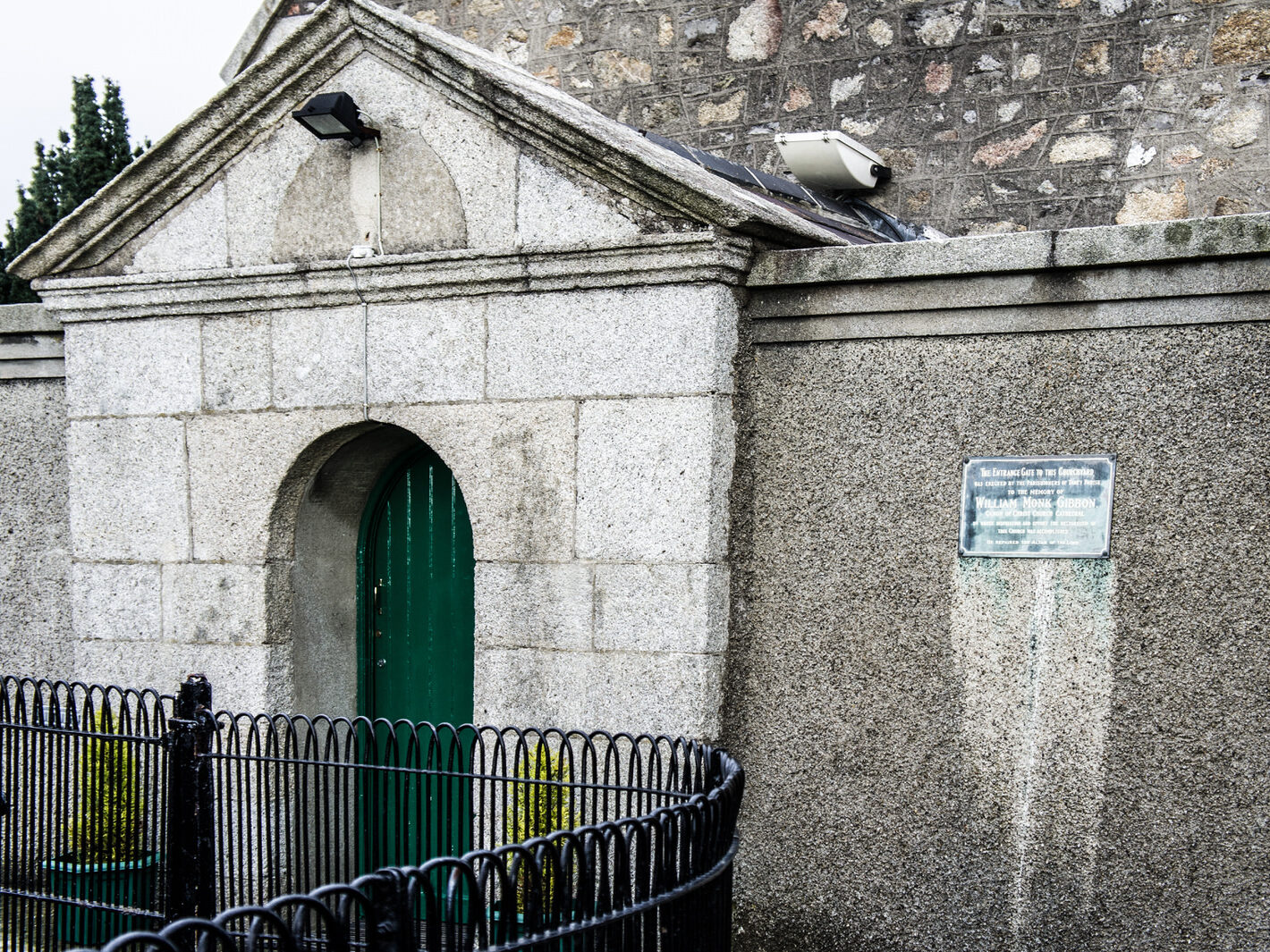





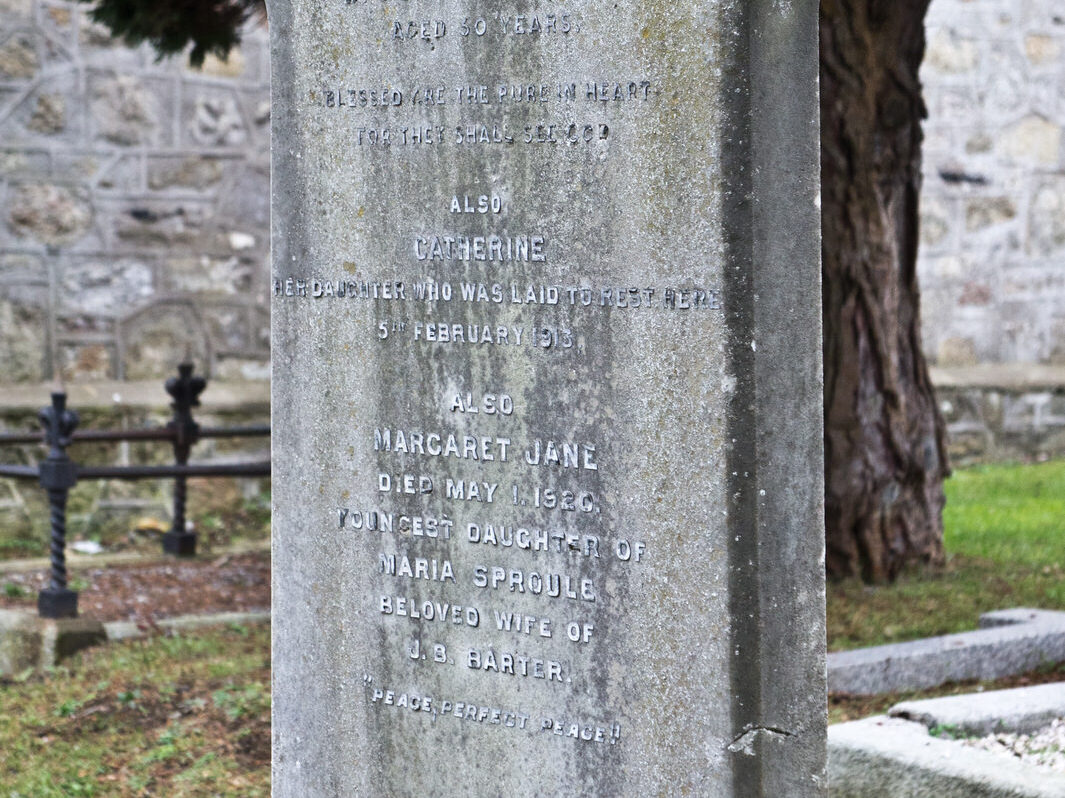


















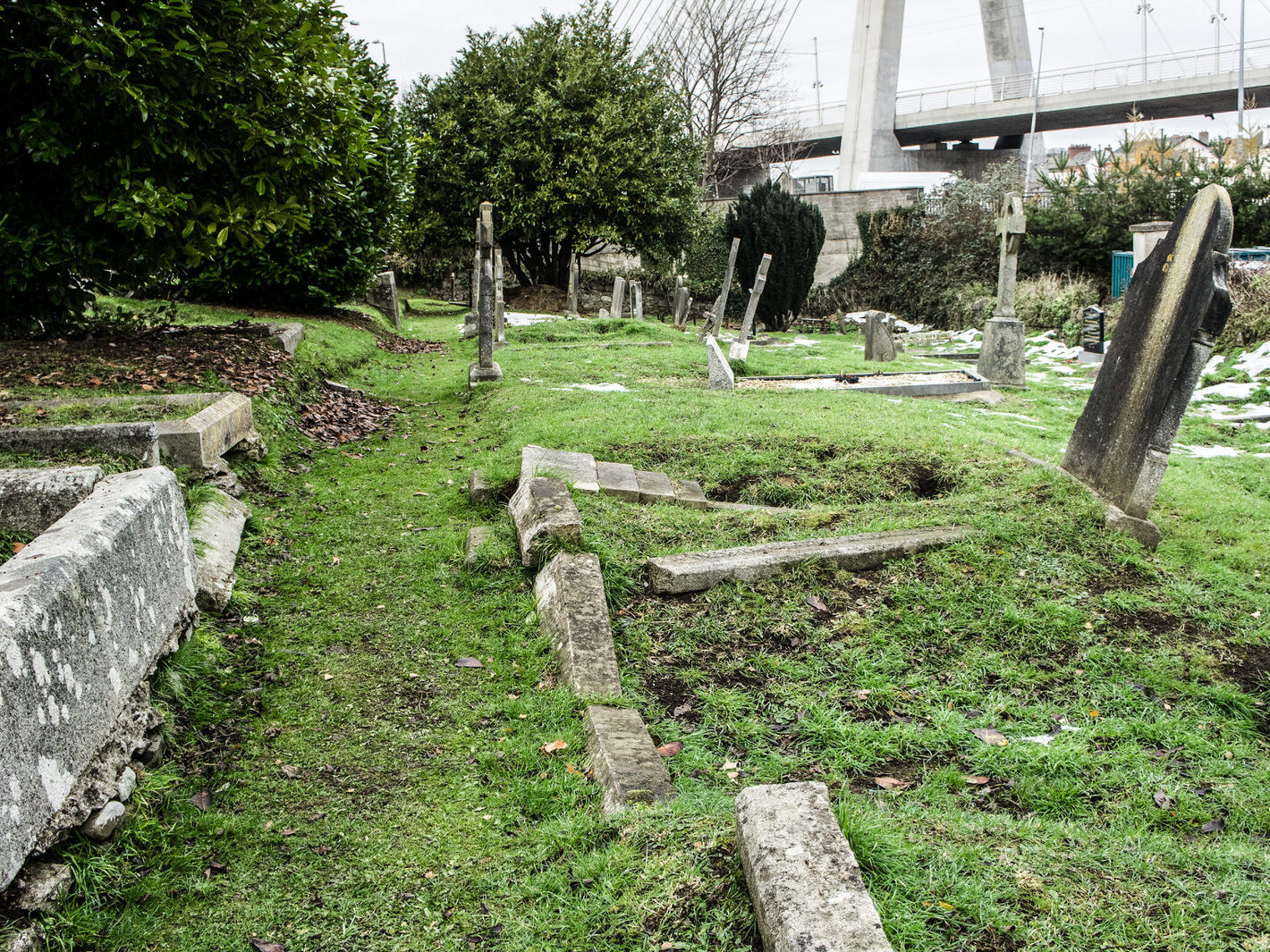






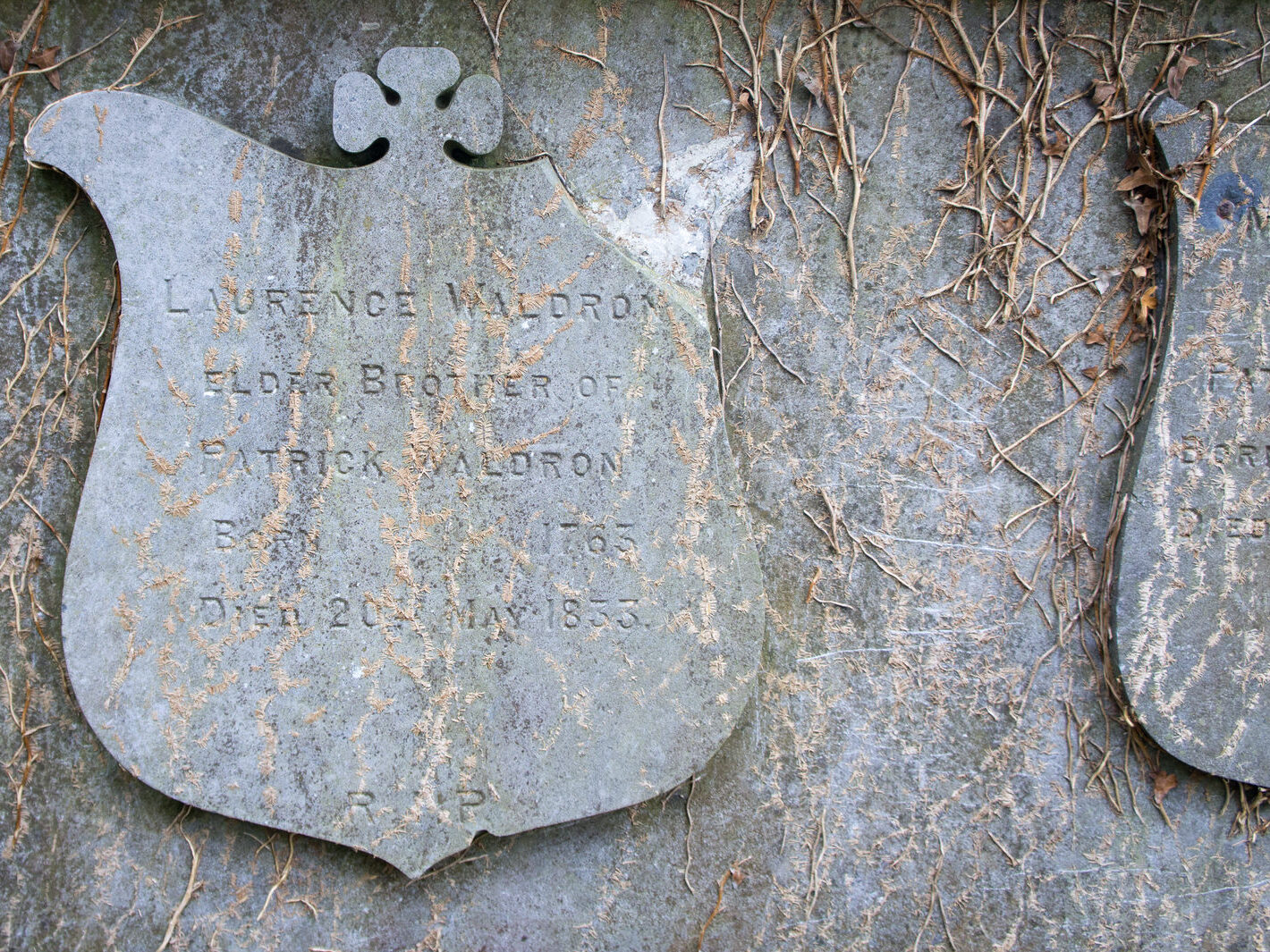




























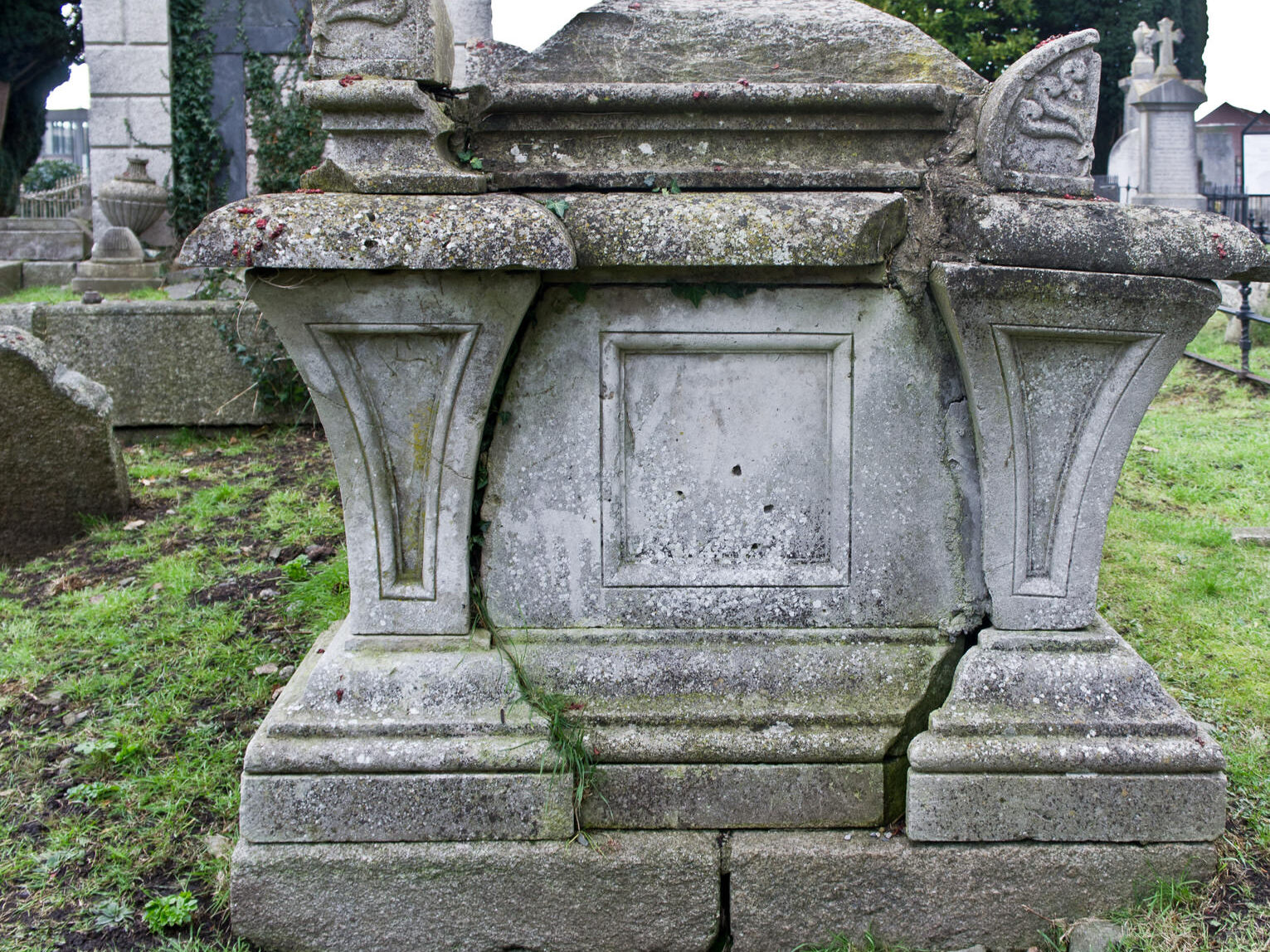



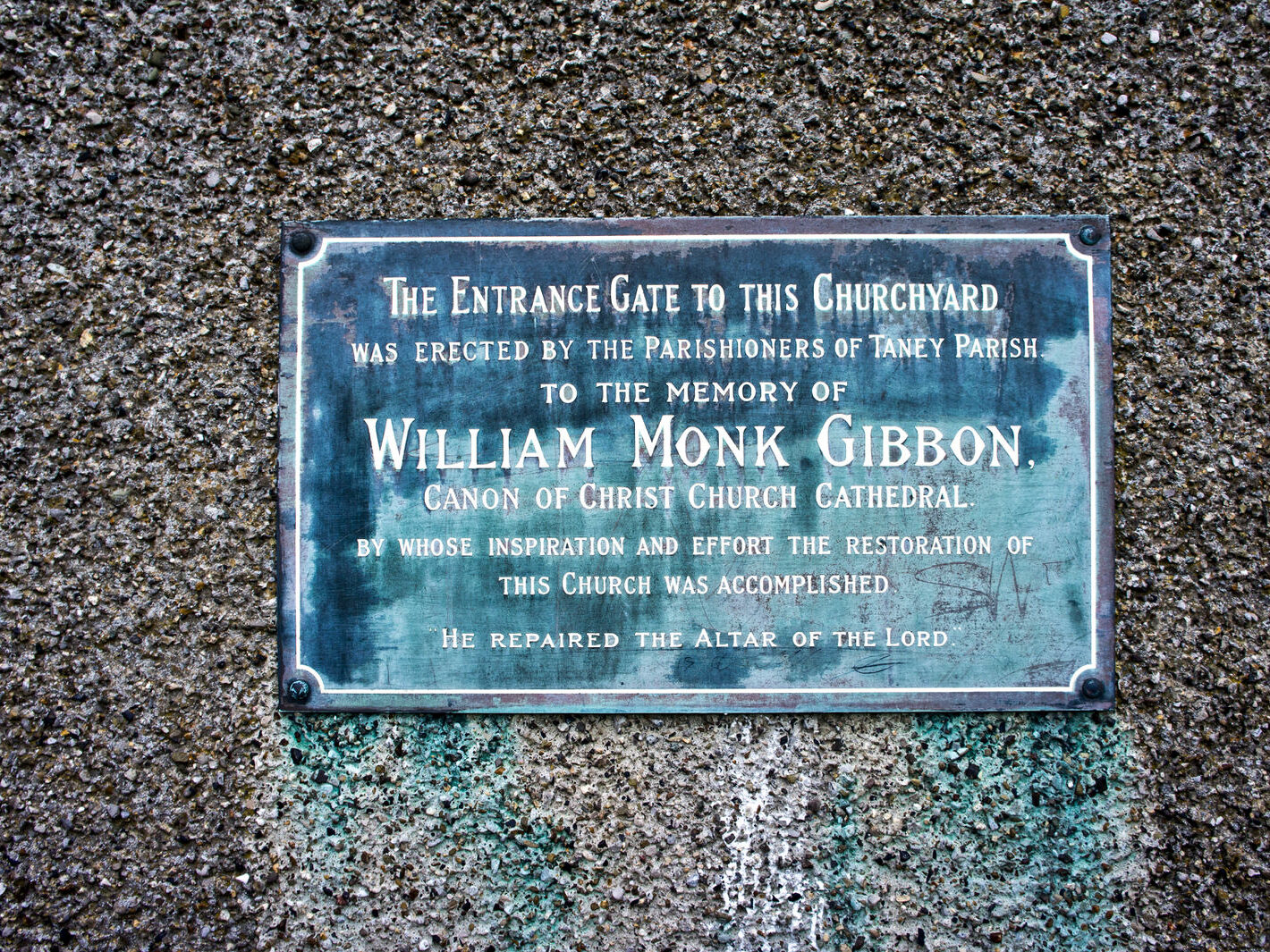

![ST ANTHONY'S CHURCH ON CLONTARF ROAD [AND WHAT WAS ONCE CLONTARF TOWN HALL]-244323-1 ST ANTHONY'S CHURCH ON CLONTARF ROAD [AND WHAT WAS ONCE CLONTARF TOWN HALL]-244323-1](https://excellentstreetimages.com/ChurchAndGraveWordPress/wp-content/uploads/2024/11/ST-ANTHONYS-CHURCH-ON-CLONTARF-ROAD-AND-WHAT-WAS-ONCE-CLONTARF-TOWN-HALL-244323-1-1422x1067.jpg)
![ST ANTHONY'S CHURCH ON CLONTARF ROAD [AND WHAT WAS ONCE CLONTARF TOWN HALL]-244322-1 ST ANTHONY'S CHURCH ON CLONTARF ROAD [AND WHAT WAS ONCE CLONTARF TOWN HALL]-244322-1](https://excellentstreetimages.com/ChurchAndGraveWordPress/wp-content/uploads/2024/11/ST-ANTHONYS-CHURCH-ON-CLONTARF-ROAD-AND-WHAT-WAS-ONCE-CLONTARF-TOWN-HALL-244322-1-1422x1067.jpg)
![ST ANTHONY'S CHURCH ON CLONTARF ROAD [AND WHAT WAS ONCE CLONTARF TOWN HALL]-244326-1 ST ANTHONY'S CHURCH ON CLONTARF ROAD [AND WHAT WAS ONCE CLONTARF TOWN HALL]-244326-1](https://excellentstreetimages.com/ChurchAndGraveWordPress/wp-content/uploads/2024/11/ST-ANTHONYS-CHURCH-ON-CLONTARF-ROAD-AND-WHAT-WAS-ONCE-CLONTARF-TOWN-HALL-244326-1-1422x1067.jpg)
![ST ANTHONY'S CHURCH ON CLONTARF ROAD [AND WHAT WAS ONCE CLONTARF TOWN HALL]-244325-1 ST ANTHONY'S CHURCH ON CLONTARF ROAD [AND WHAT WAS ONCE CLONTARF TOWN HALL]-244325-1](https://excellentstreetimages.com/ChurchAndGraveWordPress/wp-content/uploads/2024/11/ST-ANTHONYS-CHURCH-ON-CLONTARF-ROAD-AND-WHAT-WAS-ONCE-CLONTARF-TOWN-HALL-244325-1-1422x1067.jpg)
![ST ANTHONY'S CHURCH ON CLONTARF ROAD [AND WHAT WAS ONCE CLONTARF TOWN HALL]-244328-1 ST ANTHONY'S CHURCH ON CLONTARF ROAD [AND WHAT WAS ONCE CLONTARF TOWN HALL]-244328-1](https://excellentstreetimages.com/ChurchAndGraveWordPress/wp-content/uploads/2024/11/ST-ANTHONYS-CHURCH-ON-CLONTARF-ROAD-AND-WHAT-WAS-ONCE-CLONTARF-TOWN-HALL-244328-1-1422x1067.jpg)
![ST ANTHONY'S CHURCH ON CLONTARF ROAD [AND WHAT WAS ONCE CLONTARF TOWN HALL]-244329-1 ST ANTHONY'S CHURCH ON CLONTARF ROAD [AND WHAT WAS ONCE CLONTARF TOWN HALL]-244329-1](https://excellentstreetimages.com/ChurchAndGraveWordPress/wp-content/uploads/2024/11/ST-ANTHONYS-CHURCH-ON-CLONTARF-ROAD-AND-WHAT-WAS-ONCE-CLONTARF-TOWN-HALL-244329-1-1422x1067.jpg)
![ST ANTHONY'S CHURCH ON CLONTARF ROAD [AND WHAT WAS ONCE CLONTARF TOWN HALL]-244331-1 ST ANTHONY'S CHURCH ON CLONTARF ROAD [AND WHAT WAS ONCE CLONTARF TOWN HALL]-244331-1](https://excellentstreetimages.com/ChurchAndGraveWordPress/wp-content/uploads/2024/11/ST-ANTHONYS-CHURCH-ON-CLONTARF-ROAD-AND-WHAT-WAS-ONCE-CLONTARF-TOWN-HALL-244331-1-1422x1067.jpg)
![ST ANTHONY'S CHURCH ON CLONTARF ROAD [AND WHAT WAS ONCE CLONTARF TOWN HALL]-244330-1 ST ANTHONY'S CHURCH ON CLONTARF ROAD [AND WHAT WAS ONCE CLONTARF TOWN HALL]-244330-1](https://excellentstreetimages.com/ChurchAndGraveWordPress/wp-content/uploads/2024/11/ST-ANTHONYS-CHURCH-ON-CLONTARF-ROAD-AND-WHAT-WAS-ONCE-CLONTARF-TOWN-HALL-244330-1-1422x1067.jpg)
![ST ANTHONY'S CHURCH ON CLONTARF ROAD [AND WHAT WAS ONCE CLONTARF TOWN HALL]-244332-1 ST ANTHONY'S CHURCH ON CLONTARF ROAD [AND WHAT WAS ONCE CLONTARF TOWN HALL]-244332-1](https://excellentstreetimages.com/ChurchAndGraveWordPress/wp-content/uploads/2024/11/ST-ANTHONYS-CHURCH-ON-CLONTARF-ROAD-AND-WHAT-WAS-ONCE-CLONTARF-TOWN-HALL-244332-1-1422x1067.jpg)
![ST ANTHONY'S CHURCH ON CLONTARF ROAD [AND WHAT WAS ONCE CLONTARF TOWN HALL]-244334-1 ST ANTHONY'S CHURCH ON CLONTARF ROAD [AND WHAT WAS ONCE CLONTARF TOWN HALL]-244334-1](https://excellentstreetimages.com/ChurchAndGraveWordPress/wp-content/uploads/2024/11/ST-ANTHONYS-CHURCH-ON-CLONTARF-ROAD-AND-WHAT-WAS-ONCE-CLONTARF-TOWN-HALL-244334-1-1422x1067.jpg)
![ST ANTHONY'S CHURCH ON CLONTARF ROAD [AND WHAT WAS ONCE CLONTARF TOWN HALL]-244333-1 ST ANTHONY'S CHURCH ON CLONTARF ROAD [AND WHAT WAS ONCE CLONTARF TOWN HALL]-244333-1](https://excellentstreetimages.com/ChurchAndGraveWordPress/wp-content/uploads/2024/11/ST-ANTHONYS-CHURCH-ON-CLONTARF-ROAD-AND-WHAT-WAS-ONCE-CLONTARF-TOWN-HALL-244333-1-1422x1067.jpg)
![ST ANTHONY'S CHURCH ON CLONTARF ROAD [AND WHAT WAS ONCE CLONTARF TOWN HALL]-244336-1 ST ANTHONY'S CHURCH ON CLONTARF ROAD [AND WHAT WAS ONCE CLONTARF TOWN HALL]-244336-1](https://excellentstreetimages.com/ChurchAndGraveWordPress/wp-content/uploads/2024/11/ST-ANTHONYS-CHURCH-ON-CLONTARF-ROAD-AND-WHAT-WAS-ONCE-CLONTARF-TOWN-HALL-244336-1-1422x1067.jpg)
![ST ANTHONY'S CHURCH ON CLONTARF ROAD [AND WHAT WAS ONCE CLONTARF TOWN HALL]-244335-1 ST ANTHONY'S CHURCH ON CLONTARF ROAD [AND WHAT WAS ONCE CLONTARF TOWN HALL]-244335-1](https://excellentstreetimages.com/ChurchAndGraveWordPress/wp-content/uploads/2024/11/ST-ANTHONYS-CHURCH-ON-CLONTARF-ROAD-AND-WHAT-WAS-ONCE-CLONTARF-TOWN-HALL-244335-1-1422x1067.jpg)
![ST ANTHONY'S CHURCH ON CLONTARF ROAD [AND WHAT WAS ONCE CLONTARF TOWN HALL]-244338-1 ST ANTHONY'S CHURCH ON CLONTARF ROAD [AND WHAT WAS ONCE CLONTARF TOWN HALL]-244338-1](https://excellentstreetimages.com/ChurchAndGraveWordPress/wp-content/uploads/2024/11/ST-ANTHONYS-CHURCH-ON-CLONTARF-ROAD-AND-WHAT-WAS-ONCE-CLONTARF-TOWN-HALL-244338-1-1422x1067.jpg)
![ST ANTHONY'S CHURCH ON CLONTARF ROAD [AND WHAT WAS ONCE CLONTARF TOWN HALL]-244337-1 ST ANTHONY'S CHURCH ON CLONTARF ROAD [AND WHAT WAS ONCE CLONTARF TOWN HALL]-244337-1](https://excellentstreetimages.com/ChurchAndGraveWordPress/wp-content/uploads/2024/11/ST-ANTHONYS-CHURCH-ON-CLONTARF-ROAD-AND-WHAT-WAS-ONCE-CLONTARF-TOWN-HALL-244337-1-1422x1067.jpg)
![ST ANTHONY'S CHURCH ON CLONTARF ROAD [AND WHAT WAS ONCE CLONTARF TOWN HALL]-244340-1 ST ANTHONY'S CHURCH ON CLONTARF ROAD [AND WHAT WAS ONCE CLONTARF TOWN HALL]-244340-1](https://excellentstreetimages.com/ChurchAndGraveWordPress/wp-content/uploads/2024/11/ST-ANTHONYS-CHURCH-ON-CLONTARF-ROAD-AND-WHAT-WAS-ONCE-CLONTARF-TOWN-HALL-244340-1-1422x1067.jpg)
![ST ANTHONY'S CHURCH ON CLONTARF ROAD [AND WHAT WAS ONCE CLONTARF TOWN HALL]-244339-1 ST ANTHONY'S CHURCH ON CLONTARF ROAD [AND WHAT WAS ONCE CLONTARF TOWN HALL]-244339-1](https://excellentstreetimages.com/ChurchAndGraveWordPress/wp-content/uploads/2024/11/ST-ANTHONYS-CHURCH-ON-CLONTARF-ROAD-AND-WHAT-WAS-ONCE-CLONTARF-TOWN-HALL-244339-1-1422x1067.jpg)
![ST ANTHONY'S CHURCH ON CLONTARF ROAD [AND WHAT WAS ONCE CLONTARF TOWN HALL]-244342-1 ST ANTHONY'S CHURCH ON CLONTARF ROAD [AND WHAT WAS ONCE CLONTARF TOWN HALL]-244342-1](https://excellentstreetimages.com/ChurchAndGraveWordPress/wp-content/uploads/2024/11/ST-ANTHONYS-CHURCH-ON-CLONTARF-ROAD-AND-WHAT-WAS-ONCE-CLONTARF-TOWN-HALL-244342-1-1422x1067.jpg)
![ST ANTHONY'S CHURCH ON CLONTARF ROAD [AND WHAT WAS ONCE CLONTARF TOWN HALL]-244341-1 ST ANTHONY'S CHURCH ON CLONTARF ROAD [AND WHAT WAS ONCE CLONTARF TOWN HALL]-244341-1](https://excellentstreetimages.com/ChurchAndGraveWordPress/wp-content/uploads/2024/11/ST-ANTHONYS-CHURCH-ON-CLONTARF-ROAD-AND-WHAT-WAS-ONCE-CLONTARF-TOWN-HALL-244341-1-1422x1067.jpg)
![ST ANTHONY'S CHURCH ON CLONTARF ROAD [AND WHAT WAS ONCE CLONTARF TOWN HALL]-244344-1 ST ANTHONY'S CHURCH ON CLONTARF ROAD [AND WHAT WAS ONCE CLONTARF TOWN HALL]-244344-1](https://excellentstreetimages.com/ChurchAndGraveWordPress/wp-content/uploads/2024/11/ST-ANTHONYS-CHURCH-ON-CLONTARF-ROAD-AND-WHAT-WAS-ONCE-CLONTARF-TOWN-HALL-244344-1-1422x1067.jpg)
![ST ANTHONY'S CHURCH ON CLONTARF ROAD [AND WHAT WAS ONCE CLONTARF TOWN HALL]-244343-1 ST ANTHONY'S CHURCH ON CLONTARF ROAD [AND WHAT WAS ONCE CLONTARF TOWN HALL]-244343-1](https://excellentstreetimages.com/ChurchAndGraveWordPress/wp-content/uploads/2024/11/ST-ANTHONYS-CHURCH-ON-CLONTARF-ROAD-AND-WHAT-WAS-ONCE-CLONTARF-TOWN-HALL-244343-1-1422x1067.jpg)
![ST ANTHONY'S CHURCH ON CLONTARF ROAD [AND WHAT WAS ONCE CLONTARF TOWN HALL]-244346-1 ST ANTHONY'S CHURCH ON CLONTARF ROAD [AND WHAT WAS ONCE CLONTARF TOWN HALL]-244346-1](https://excellentstreetimages.com/ChurchAndGraveWordPress/wp-content/uploads/2024/11/ST-ANTHONYS-CHURCH-ON-CLONTARF-ROAD-AND-WHAT-WAS-ONCE-CLONTARF-TOWN-HALL-244346-1-1422x1067.jpg)
![ST ANTHONY'S CHURCH ON CLONTARF ROAD [AND WHAT WAS ONCE CLONTARF TOWN HALL]-244345-1 ST ANTHONY'S CHURCH ON CLONTARF ROAD [AND WHAT WAS ONCE CLONTARF TOWN HALL]-244345-1](https://excellentstreetimages.com/ChurchAndGraveWordPress/wp-content/uploads/2024/11/ST-ANTHONYS-CHURCH-ON-CLONTARF-ROAD-AND-WHAT-WAS-ONCE-CLONTARF-TOWN-HALL-244345-1-1422x1067.jpg)
![ST ANTHONY'S CHURCH ON CLONTARF ROAD [AND WHAT WAS ONCE CLONTARF TOWN HALL]-244348-1 ST ANTHONY'S CHURCH ON CLONTARF ROAD [AND WHAT WAS ONCE CLONTARF TOWN HALL]-244348-1](https://excellentstreetimages.com/ChurchAndGraveWordPress/wp-content/uploads/2024/11/ST-ANTHONYS-CHURCH-ON-CLONTARF-ROAD-AND-WHAT-WAS-ONCE-CLONTARF-TOWN-HALL-244348-1-1422x1067.jpg)
![ST ANTHONY'S CHURCH ON CLONTARF ROAD [AND WHAT WAS ONCE CLONTARF TOWN HALL]-244347-1 ST ANTHONY'S CHURCH ON CLONTARF ROAD [AND WHAT WAS ONCE CLONTARF TOWN HALL]-244347-1](https://excellentstreetimages.com/ChurchAndGraveWordPress/wp-content/uploads/2024/11/ST-ANTHONYS-CHURCH-ON-CLONTARF-ROAD-AND-WHAT-WAS-ONCE-CLONTARF-TOWN-HALL-244347-1-1422x1067.jpg)
![ST ANTHONY'S CHURCH ON CLONTARF ROAD [AND WHAT WAS ONCE CLONTARF TOWN HALL]-244350-1 ST ANTHONY'S CHURCH ON CLONTARF ROAD [AND WHAT WAS ONCE CLONTARF TOWN HALL]-244350-1](https://excellentstreetimages.com/ChurchAndGraveWordPress/wp-content/uploads/2024/11/ST-ANTHONYS-CHURCH-ON-CLONTARF-ROAD-AND-WHAT-WAS-ONCE-CLONTARF-TOWN-HALL-244350-1-1422x1067.jpg)
![ST ANTHONY'S CHURCH ON CLONTARF ROAD [AND WHAT WAS ONCE CLONTARF TOWN HALL]-244349-1 ST ANTHONY'S CHURCH ON CLONTARF ROAD [AND WHAT WAS ONCE CLONTARF TOWN HALL]-244349-1](https://excellentstreetimages.com/ChurchAndGraveWordPress/wp-content/uploads/2024/11/ST-ANTHONYS-CHURCH-ON-CLONTARF-ROAD-AND-WHAT-WAS-ONCE-CLONTARF-TOWN-HALL-244349-1-1422x1067.jpg)
![ST ANTHONY'S CHURCH ON CLONTARF ROAD [AND WHAT WAS ONCE CLONTARF TOWN HALL]-244353-1 ST ANTHONY'S CHURCH ON CLONTARF ROAD [AND WHAT WAS ONCE CLONTARF TOWN HALL]-244353-1](https://excellentstreetimages.com/ChurchAndGraveWordPress/wp-content/uploads/2024/11/ST-ANTHONYS-CHURCH-ON-CLONTARF-ROAD-AND-WHAT-WAS-ONCE-CLONTARF-TOWN-HALL-244353-1-1422x1067.jpg)
![ST ANTHONY'S CHURCH ON CLONTARF ROAD [AND WHAT WAS ONCE CLONTARF TOWN HALL]-244352-1 ST ANTHONY'S CHURCH ON CLONTARF ROAD [AND WHAT WAS ONCE CLONTARF TOWN HALL]-244352-1](https://excellentstreetimages.com/ChurchAndGraveWordPress/wp-content/uploads/2024/11/ST-ANTHONYS-CHURCH-ON-CLONTARF-ROAD-AND-WHAT-WAS-ONCE-CLONTARF-TOWN-HALL-244352-1-1422x1067.jpg)
![ST ANTHONY'S CHURCH ON CLONTARF ROAD [AND WHAT WAS ONCE CLONTARF TOWN HALL]-244351-1 ST ANTHONY'S CHURCH ON CLONTARF ROAD [AND WHAT WAS ONCE CLONTARF TOWN HALL]-244351-1](https://excellentstreetimages.com/ChurchAndGraveWordPress/wp-content/uploads/2024/11/ST-ANTHONYS-CHURCH-ON-CLONTARF-ROAD-AND-WHAT-WAS-ONCE-CLONTARF-TOWN-HALL-244351-1-1422x1067.jpg)
![ST ANTHONY'S CHURCH ON CLONTARF ROAD [AND WHAT WAS ONCE CLONTARF TOWN HALL]-244355-1 ST ANTHONY'S CHURCH ON CLONTARF ROAD [AND WHAT WAS ONCE CLONTARF TOWN HALL]-244355-1](https://excellentstreetimages.com/ChurchAndGraveWordPress/wp-content/uploads/2024/11/ST-ANTHONYS-CHURCH-ON-CLONTARF-ROAD-AND-WHAT-WAS-ONCE-CLONTARF-TOWN-HALL-244355-1-1422x1067.jpg)
![ST ANTHONY'S CHURCH ON CLONTARF ROAD [AND WHAT WAS ONCE CLONTARF TOWN HALL]-244354-1 ST ANTHONY'S CHURCH ON CLONTARF ROAD [AND WHAT WAS ONCE CLONTARF TOWN HALL]-244354-1](https://excellentstreetimages.com/ChurchAndGraveWordPress/wp-content/uploads/2024/11/ST-ANTHONYS-CHURCH-ON-CLONTARF-ROAD-AND-WHAT-WAS-ONCE-CLONTARF-TOWN-HALL-244354-1-1422x1067.jpg)
![ST ANTHONY'S CHURCH ON CLONTARF ROAD [AND WHAT WAS ONCE CLONTARF TOWN HALL]-244357-1 ST ANTHONY'S CHURCH ON CLONTARF ROAD [AND WHAT WAS ONCE CLONTARF TOWN HALL]-244357-1](https://excellentstreetimages.com/ChurchAndGraveWordPress/wp-content/uploads/2024/11/ST-ANTHONYS-CHURCH-ON-CLONTARF-ROAD-AND-WHAT-WAS-ONCE-CLONTARF-TOWN-HALL-244357-1-1422x1067.jpg)
![ST ANTHONY'S CHURCH ON CLONTARF ROAD [AND WHAT WAS ONCE CLONTARF TOWN HALL]-244356-1](https://excellentstreetimages.com/ChurchAndGraveWordPress/wp-content/uploads/2024/11/ST-ANTHONYS-CHURCH-ON-CLONTARF-ROAD-AND-WHAT-WAS-ONCE-CLONTARF-TOWN-HALL-244356-1-1422x1067.jpg)
![ST PETER'S CHURCH IN PHIBSBOROUGH [HAS A NUMBER OF STUNNING HARRY CLARKE CREATIONS]-244096-1 ST PETER'S CHURCH IN PHIBSBOROUGH [HAS A NUMBER OF STUNNING HARRY CLARKE CREATIONS]-244096-1](https://excellentstreetimages.com/ChurchAndGraveWordPress/wp-content/uploads/2024/11/ST-PETERS-CHURCH-IN-PHIBSBOROUGH-HAS-A-NUMBER-OF-STUNNING-HARRY-CLARKE-CREATIONS-244096-1-1422x1067.jpg)
![ST PETER'S CHURCH IN PHIBSBOROUGH [HAS A NUMBER OF STUNNING HARRY CLARKE CREATIONS]-244094-1 ST PETER'S CHURCH IN PHIBSBOROUGH [HAS A NUMBER OF STUNNING HARRY CLARKE CREATIONS]-244094-1](https://excellentstreetimages.com/ChurchAndGraveWordPress/wp-content/uploads/2024/11/ST-PETERS-CHURCH-IN-PHIBSBOROUGH-HAS-A-NUMBER-OF-STUNNING-HARRY-CLARKE-CREATIONS-244094-1-1422x1067.jpg)
![ST PETER'S CHURCH IN PHIBSBOROUGH [HAS A NUMBER OF STUNNING HARRY CLARKE CREATIONS]-244095-1 ST PETER'S CHURCH IN PHIBSBOROUGH [HAS A NUMBER OF STUNNING HARRY CLARKE CREATIONS]-244095-1](https://excellentstreetimages.com/ChurchAndGraveWordPress/wp-content/uploads/2024/11/ST-PETERS-CHURCH-IN-PHIBSBOROUGH-HAS-A-NUMBER-OF-STUNNING-HARRY-CLARKE-CREATIONS-244095-1-1422x1067.jpg)
![ST PETER'S CHURCH IN PHIBSBOROUGH [HAS A NUMBER OF STUNNING HARRY CLARKE CREATIONS]-244091-1 ST PETER'S CHURCH IN PHIBSBOROUGH [HAS A NUMBER OF STUNNING HARRY CLARKE CREATIONS]-244091-1](https://excellentstreetimages.com/ChurchAndGraveWordPress/wp-content/uploads/2024/11/ST-PETERS-CHURCH-IN-PHIBSBOROUGH-HAS-A-NUMBER-OF-STUNNING-HARRY-CLARKE-CREATIONS-244091-1-1422x1067.jpg)
![ST PETER'S CHURCH IN PHIBSBOROUGH [HAS A NUMBER OF STUNNING HARRY CLARKE CREATIONS]-244092-1 ST PETER'S CHURCH IN PHIBSBOROUGH [HAS A NUMBER OF STUNNING HARRY CLARKE CREATIONS]-244092-1](https://excellentstreetimages.com/ChurchAndGraveWordPress/wp-content/uploads/2024/11/ST-PETERS-CHURCH-IN-PHIBSBOROUGH-HAS-A-NUMBER-OF-STUNNING-HARRY-CLARKE-CREATIONS-244092-1-1422x1067.jpg)
![ST PETER'S CHURCH IN PHIBSBOROUGH [HAS A NUMBER OF STUNNING HARRY CLARKE CREATIONS]-244093-1 ST PETER'S CHURCH IN PHIBSBOROUGH [HAS A NUMBER OF STUNNING HARRY CLARKE CREATIONS]-244093-1](https://excellentstreetimages.com/ChurchAndGraveWordPress/wp-content/uploads/2024/11/ST-PETERS-CHURCH-IN-PHIBSBOROUGH-HAS-A-NUMBER-OF-STUNNING-HARRY-CLARKE-CREATIONS-244093-1-1422x1067.jpg)
![ST PETER'S CHURCH IN PHIBSBOROUGH [HAS A NUMBER OF STUNNING HARRY CLARKE CREATIONS]-244088-1 ST PETER'S CHURCH IN PHIBSBOROUGH [HAS A NUMBER OF STUNNING HARRY CLARKE CREATIONS]-244088-1](https://excellentstreetimages.com/ChurchAndGraveWordPress/wp-content/uploads/2024/11/ST-PETERS-CHURCH-IN-PHIBSBOROUGH-HAS-A-NUMBER-OF-STUNNING-HARRY-CLARKE-CREATIONS-244088-1-1422x1067.jpg)
![ST PETER'S CHURCH IN PHIBSBOROUGH [HAS A NUMBER OF STUNNING HARRY CLARKE CREATIONS]-244089-1 ST PETER'S CHURCH IN PHIBSBOROUGH [HAS A NUMBER OF STUNNING HARRY CLARKE CREATIONS]-244089-1](https://excellentstreetimages.com/ChurchAndGraveWordPress/wp-content/uploads/2024/11/ST-PETERS-CHURCH-IN-PHIBSBOROUGH-HAS-A-NUMBER-OF-STUNNING-HARRY-CLARKE-CREATIONS-244089-1-1422x1067.jpg)
![ST PETER'S CHURCH IN PHIBSBOROUGH [HAS A NUMBER OF STUNNING HARRY CLARKE CREATIONS]-244090-1 ST PETER'S CHURCH IN PHIBSBOROUGH [HAS A NUMBER OF STUNNING HARRY CLARKE CREATIONS]-244090-1](https://excellentstreetimages.com/ChurchAndGraveWordPress/wp-content/uploads/2024/11/ST-PETERS-CHURCH-IN-PHIBSBOROUGH-HAS-A-NUMBER-OF-STUNNING-HARRY-CLARKE-CREATIONS-244090-1-1422x1067.jpg)
![ST PETER'S CHURCH IN PHIBSBOROUGH [HAS A NUMBER OF STUNNING HARRY CLARKE CREATIONS]-244085-1 ST PETER'S CHURCH IN PHIBSBOROUGH [HAS A NUMBER OF STUNNING HARRY CLARKE CREATIONS]-244085-1](https://excellentstreetimages.com/ChurchAndGraveWordPress/wp-content/uploads/2024/11/ST-PETERS-CHURCH-IN-PHIBSBOROUGH-HAS-A-NUMBER-OF-STUNNING-HARRY-CLARKE-CREATIONS-244085-1-1422x1067.jpg)
![ST PETER'S CHURCH IN PHIBSBOROUGH [HAS A NUMBER OF STUNNING HARRY CLARKE CREATIONS]-244086-1 ST PETER'S CHURCH IN PHIBSBOROUGH [HAS A NUMBER OF STUNNING HARRY CLARKE CREATIONS]-244086-1](https://excellentstreetimages.com/ChurchAndGraveWordPress/wp-content/uploads/2024/11/ST-PETERS-CHURCH-IN-PHIBSBOROUGH-HAS-A-NUMBER-OF-STUNNING-HARRY-CLARKE-CREATIONS-244086-1-1422x1067.jpg)
![ST PETER'S CHURCH IN PHIBSBOROUGH [HAS A NUMBER OF STUNNING HARRY CLARKE CREATIONS]-244087-1 ST PETER'S CHURCH IN PHIBSBOROUGH [HAS A NUMBER OF STUNNING HARRY CLARKE CREATIONS]-244087-1](https://excellentstreetimages.com/ChurchAndGraveWordPress/wp-content/uploads/2024/11/ST-PETERS-CHURCH-IN-PHIBSBOROUGH-HAS-A-NUMBER-OF-STUNNING-HARRY-CLARKE-CREATIONS-244087-1-1422x1067.jpg)
![ST PETER'S CHURCH IN PHIBSBOROUGH [HAS A NUMBER OF STUNNING HARRY CLARKE CREATIONS]-244083-1 ST PETER'S CHURCH IN PHIBSBOROUGH [HAS A NUMBER OF STUNNING HARRY CLARKE CREATIONS]-244083-1](https://excellentstreetimages.com/ChurchAndGraveWordPress/wp-content/uploads/2024/11/ST-PETERS-CHURCH-IN-PHIBSBOROUGH-HAS-A-NUMBER-OF-STUNNING-HARRY-CLARKE-CREATIONS-244083-1-1422x1067.jpg)
![ST PETER'S CHURCH IN PHIBSBOROUGH [HAS A NUMBER OF STUNNING HARRY CLARKE CREATIONS]-244084-1 ST PETER'S CHURCH IN PHIBSBOROUGH [HAS A NUMBER OF STUNNING HARRY CLARKE CREATIONS]-244084-1](https://excellentstreetimages.com/ChurchAndGraveWordPress/wp-content/uploads/2024/11/ST-PETERS-CHURCH-IN-PHIBSBOROUGH-HAS-A-NUMBER-OF-STUNNING-HARRY-CLARKE-CREATIONS-244084-1-1422x1067.jpg)
![ST PETER'S CHURCH IN PHIBSBOROUGH [HAS A NUMBER OF STUNNING HARRY CLARKE CREATIONS]-244079-1 ST PETER'S CHURCH IN PHIBSBOROUGH [HAS A NUMBER OF STUNNING HARRY CLARKE CREATIONS]-244079-1](https://excellentstreetimages.com/ChurchAndGraveWordPress/wp-content/uploads/2024/11/ST-PETERS-CHURCH-IN-PHIBSBOROUGH-HAS-A-NUMBER-OF-STUNNING-HARRY-CLARKE-CREATIONS-244079-1-1422x1067.jpg)
![ST PETER'S CHURCH IN PHIBSBOROUGH [HAS A NUMBER OF STUNNING HARRY CLARKE CREATIONS]-244080-1 ST PETER'S CHURCH IN PHIBSBOROUGH [HAS A NUMBER OF STUNNING HARRY CLARKE CREATIONS]-244080-1](https://excellentstreetimages.com/ChurchAndGraveWordPress/wp-content/uploads/2024/11/ST-PETERS-CHURCH-IN-PHIBSBOROUGH-HAS-A-NUMBER-OF-STUNNING-HARRY-CLARKE-CREATIONS-244080-1-1422x1067.jpg)
![ST PETER'S CHURCH IN PHIBSBOROUGH [HAS A NUMBER OF STUNNING HARRY CLARKE CREATIONS]-244081-1 ST PETER'S CHURCH IN PHIBSBOROUGH [HAS A NUMBER OF STUNNING HARRY CLARKE CREATIONS]-244081-1](https://excellentstreetimages.com/ChurchAndGraveWordPress/wp-content/uploads/2024/11/ST-PETERS-CHURCH-IN-PHIBSBOROUGH-HAS-A-NUMBER-OF-STUNNING-HARRY-CLARKE-CREATIONS-244081-1-1422x1067.jpg)
![ST PETER'S CHURCH IN PHIBSBOROUGH [HAS A NUMBER OF STUNNING HARRY CLARKE CREATIONS]-244082-1 ST PETER'S CHURCH IN PHIBSBOROUGH [HAS A NUMBER OF STUNNING HARRY CLARKE CREATIONS]-244082-1](https://excellentstreetimages.com/ChurchAndGraveWordPress/wp-content/uploads/2024/11/ST-PETERS-CHURCH-IN-PHIBSBOROUGH-HAS-A-NUMBER-OF-STUNNING-HARRY-CLARKE-CREATIONS-244082-1-1422x1067.jpg)
![ST PETER'S CHURCH IN PHIBSBOROUGH [HAS A NUMBER OF STUNNING HARRY CLARKE CREATIONS]-244077-1 ST PETER'S CHURCH IN PHIBSBOROUGH [HAS A NUMBER OF STUNNING HARRY CLARKE CREATIONS]-244077-1](https://excellentstreetimages.com/ChurchAndGraveWordPress/wp-content/uploads/2024/11/ST-PETERS-CHURCH-IN-PHIBSBOROUGH-HAS-A-NUMBER-OF-STUNNING-HARRY-CLARKE-CREATIONS-244077-1-1422x1067.jpg)
![ST PETER'S CHURCH IN PHIBSBOROUGH [HAS A NUMBER OF STUNNING HARRY CLARKE CREATIONS]-244078-1 ST PETER'S CHURCH IN PHIBSBOROUGH [HAS A NUMBER OF STUNNING HARRY CLARKE CREATIONS]-244078-1](https://excellentstreetimages.com/ChurchAndGraveWordPress/wp-content/uploads/2024/11/ST-PETERS-CHURCH-IN-PHIBSBOROUGH-HAS-A-NUMBER-OF-STUNNING-HARRY-CLARKE-CREATIONS-244078-1-1422x1067.jpg)
![ST PETER'S CHURCH IN PHIBSBOROUGH [HAS A NUMBER OF STUNNING HARRY CLARKE CREATIONS]-244073-1 ST PETER'S CHURCH IN PHIBSBOROUGH [HAS A NUMBER OF STUNNING HARRY CLARKE CREATIONS]-244073-1](https://excellentstreetimages.com/ChurchAndGraveWordPress/wp-content/uploads/2024/11/ST-PETERS-CHURCH-IN-PHIBSBOROUGH-HAS-A-NUMBER-OF-STUNNING-HARRY-CLARKE-CREATIONS-244073-1-1422x1067.jpg)
![ST PETER'S CHURCH IN PHIBSBOROUGH [HAS A NUMBER OF STUNNING HARRY CLARKE CREATIONS]-244074-1 ST PETER'S CHURCH IN PHIBSBOROUGH [HAS A NUMBER OF STUNNING HARRY CLARKE CREATIONS]-244074-1](https://excellentstreetimages.com/ChurchAndGraveWordPress/wp-content/uploads/2024/11/ST-PETERS-CHURCH-IN-PHIBSBOROUGH-HAS-A-NUMBER-OF-STUNNING-HARRY-CLARKE-CREATIONS-244074-1-1422x1067.jpg)
![ST PETER'S CHURCH IN PHIBSBOROUGH [HAS A NUMBER OF STUNNING HARRY CLARKE CREATIONS]-244075-1 ST PETER'S CHURCH IN PHIBSBOROUGH [HAS A NUMBER OF STUNNING HARRY CLARKE CREATIONS]-244075-1](https://excellentstreetimages.com/ChurchAndGraveWordPress/wp-content/uploads/2024/11/ST-PETERS-CHURCH-IN-PHIBSBOROUGH-HAS-A-NUMBER-OF-STUNNING-HARRY-CLARKE-CREATIONS-244075-1-1422x1067.jpg)
![ST PETER'S CHURCH IN PHIBSBOROUGH [HAS A NUMBER OF STUNNING HARRY CLARKE CREATIONS]-244076-1 ST PETER'S CHURCH IN PHIBSBOROUGH [HAS A NUMBER OF STUNNING HARRY CLARKE CREATIONS]-244076-1](https://excellentstreetimages.com/ChurchAndGraveWordPress/wp-content/uploads/2024/11/ST-PETERS-CHURCH-IN-PHIBSBOROUGH-HAS-A-NUMBER-OF-STUNNING-HARRY-CLARKE-CREATIONS-244076-1-1422x1067.jpg)
![ST PETER'S CHURCH IN PHIBSBOROUGH [HAS A NUMBER OF STUNNING HARRY CLARKE CREATIONS]-244069-1 ST PETER'S CHURCH IN PHIBSBOROUGH [HAS A NUMBER OF STUNNING HARRY CLARKE CREATIONS]-244069-1](https://excellentstreetimages.com/ChurchAndGraveWordPress/wp-content/uploads/2024/11/ST-PETERS-CHURCH-IN-PHIBSBOROUGH-HAS-A-NUMBER-OF-STUNNING-HARRY-CLARKE-CREATIONS-244069-1-1422x1067.jpg)
![ST PETER'S CHURCH IN PHIBSBOROUGH [HAS A NUMBER OF STUNNING HARRY CLARKE CREATIONS]-244071-1 ST PETER'S CHURCH IN PHIBSBOROUGH [HAS A NUMBER OF STUNNING HARRY CLARKE CREATIONS]-244071-1](https://excellentstreetimages.com/ChurchAndGraveWordPress/wp-content/uploads/2024/11/ST-PETERS-CHURCH-IN-PHIBSBOROUGH-HAS-A-NUMBER-OF-STUNNING-HARRY-CLARKE-CREATIONS-244071-1-1422x1067.jpg)
![ST PETER'S CHURCH IN PHIBSBOROUGH [HAS A NUMBER OF STUNNING HARRY CLARKE CREATIONS]-244072-1 ST PETER'S CHURCH IN PHIBSBOROUGH [HAS A NUMBER OF STUNNING HARRY CLARKE CREATIONS]-244072-1](https://excellentstreetimages.com/ChurchAndGraveWordPress/wp-content/uploads/2024/11/ST-PETERS-CHURCH-IN-PHIBSBOROUGH-HAS-A-NUMBER-OF-STUNNING-HARRY-CLARKE-CREATIONS-244072-1-1422x1067.jpg)
![ST PETER'S CHURCH IN PHIBSBOROUGH [HAS A NUMBER OF STUNNING HARRY CLARKE CREATIONS]-244070-1 ST PETER'S CHURCH IN PHIBSBOROUGH [HAS A NUMBER OF STUNNING HARRY CLARKE CREATIONS]-244070-1](https://excellentstreetimages.com/ChurchAndGraveWordPress/wp-content/uploads/2024/11/ST-PETERS-CHURCH-IN-PHIBSBOROUGH-HAS-A-NUMBER-OF-STUNNING-HARRY-CLARKE-CREATIONS-244070-1-1422x1067.jpg)
![ST PETER'S CHURCH IN PHIBSBOROUGH [HAS A NUMBER OF STUNNING HARRY CLARKE CREATIONS]-244065-1 ST PETER'S CHURCH IN PHIBSBOROUGH [HAS A NUMBER OF STUNNING HARRY CLARKE CREATIONS]-244065-1](https://excellentstreetimages.com/ChurchAndGraveWordPress/wp-content/uploads/2024/11/ST-PETERS-CHURCH-IN-PHIBSBOROUGH-HAS-A-NUMBER-OF-STUNNING-HARRY-CLARKE-CREATIONS-244065-1-1422x1067.jpg)
![ST PETER'S CHURCH IN PHIBSBOROUGH [HAS A NUMBER OF STUNNING HARRY CLARKE CREATIONS]-244066-1 ST PETER'S CHURCH IN PHIBSBOROUGH [HAS A NUMBER OF STUNNING HARRY CLARKE CREATIONS]-244066-1](https://excellentstreetimages.com/ChurchAndGraveWordPress/wp-content/uploads/2024/11/ST-PETERS-CHURCH-IN-PHIBSBOROUGH-HAS-A-NUMBER-OF-STUNNING-HARRY-CLARKE-CREATIONS-244066-1-1422x1067.jpg)
![ST PETER'S CHURCH IN PHIBSBOROUGH [HAS A NUMBER OF STUNNING HARRY CLARKE CREATIONS]-244067-1 ST PETER'S CHURCH IN PHIBSBOROUGH [HAS A NUMBER OF STUNNING HARRY CLARKE CREATIONS]-244067-1](https://excellentstreetimages.com/ChurchAndGraveWordPress/wp-content/uploads/2024/11/ST-PETERS-CHURCH-IN-PHIBSBOROUGH-HAS-A-NUMBER-OF-STUNNING-HARRY-CLARKE-CREATIONS-244067-1-1422x1067.jpg)
![ST PETER'S CHURCH IN PHIBSBOROUGH [HAS A NUMBER OF STUNNING HARRY CLARKE CREATIONS]-244068-1 ST PETER'S CHURCH IN PHIBSBOROUGH [HAS A NUMBER OF STUNNING HARRY CLARKE CREATIONS]-244068-1](https://excellentstreetimages.com/ChurchAndGraveWordPress/wp-content/uploads/2024/11/ST-PETERS-CHURCH-IN-PHIBSBOROUGH-HAS-A-NUMBER-OF-STUNNING-HARRY-CLARKE-CREATIONS-244068-1-1422x1067.jpg)